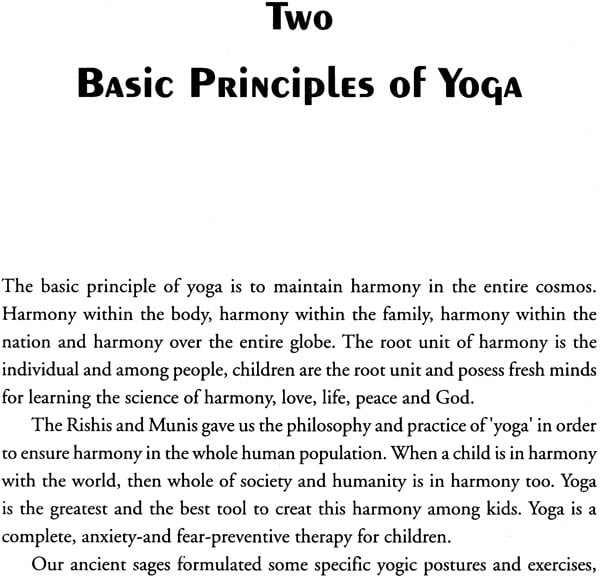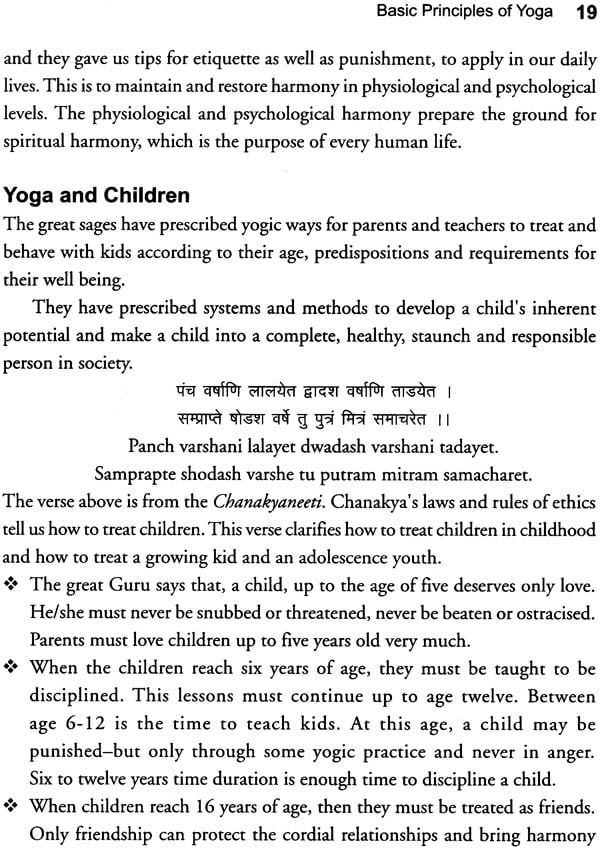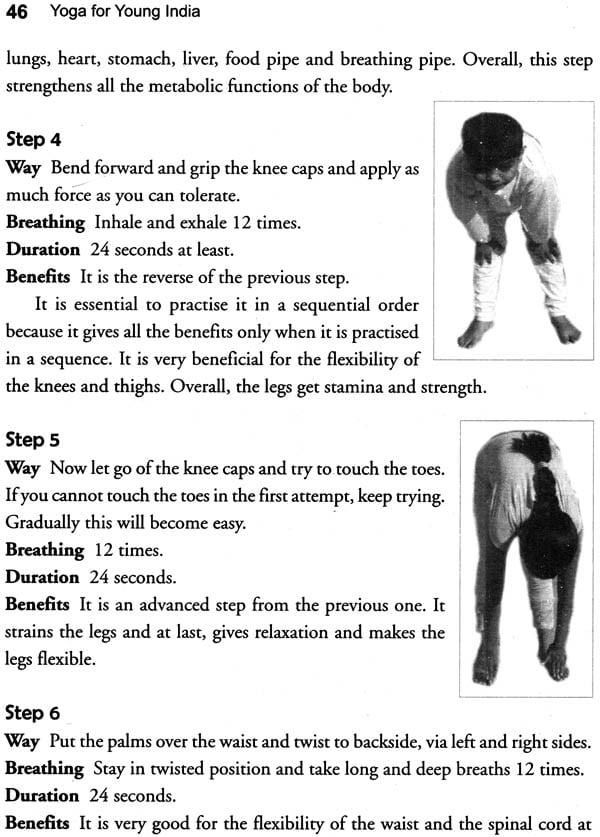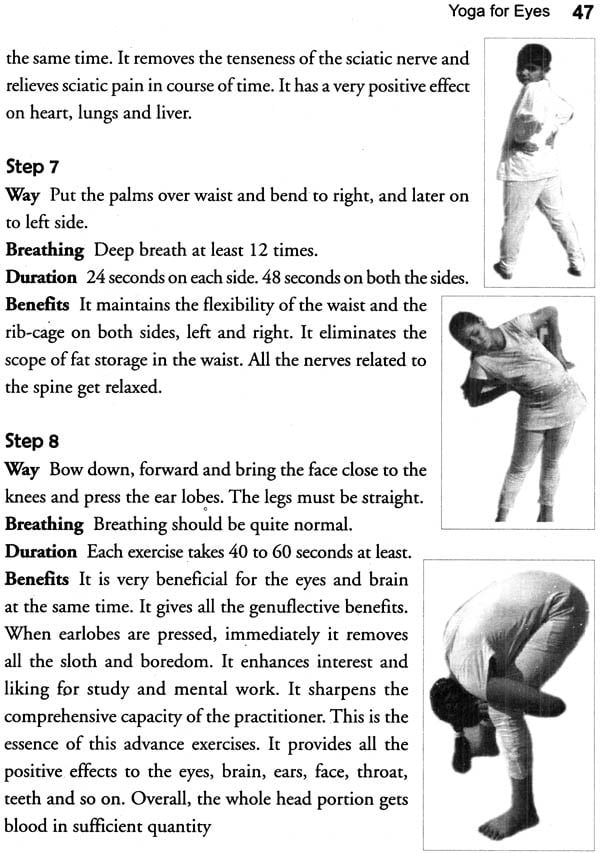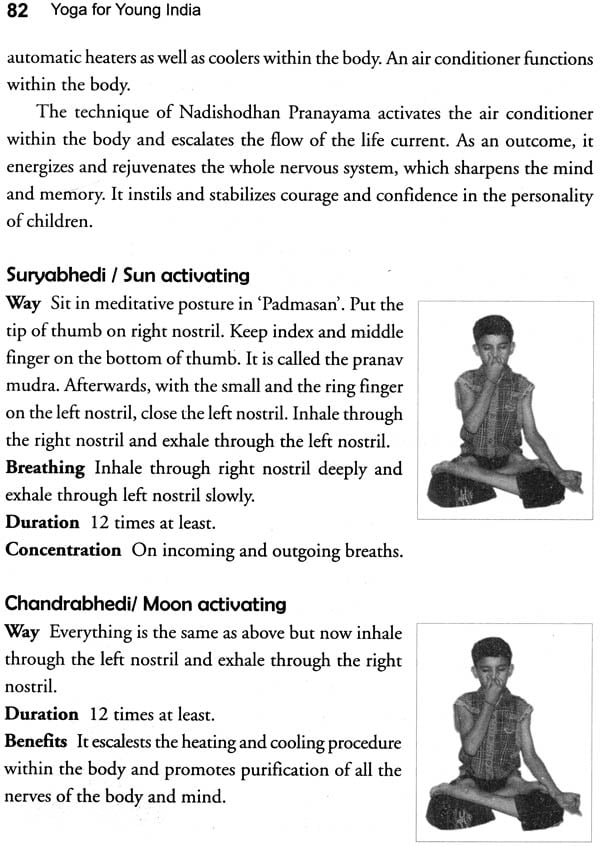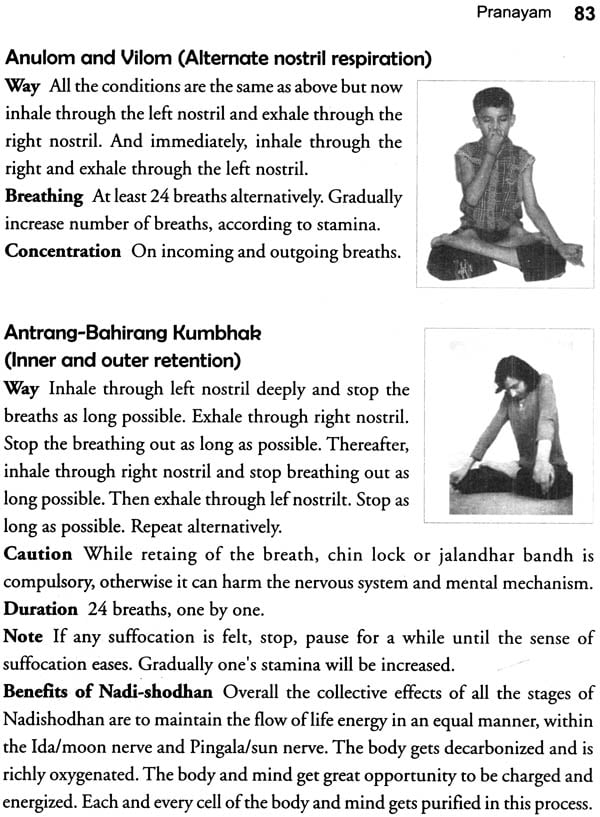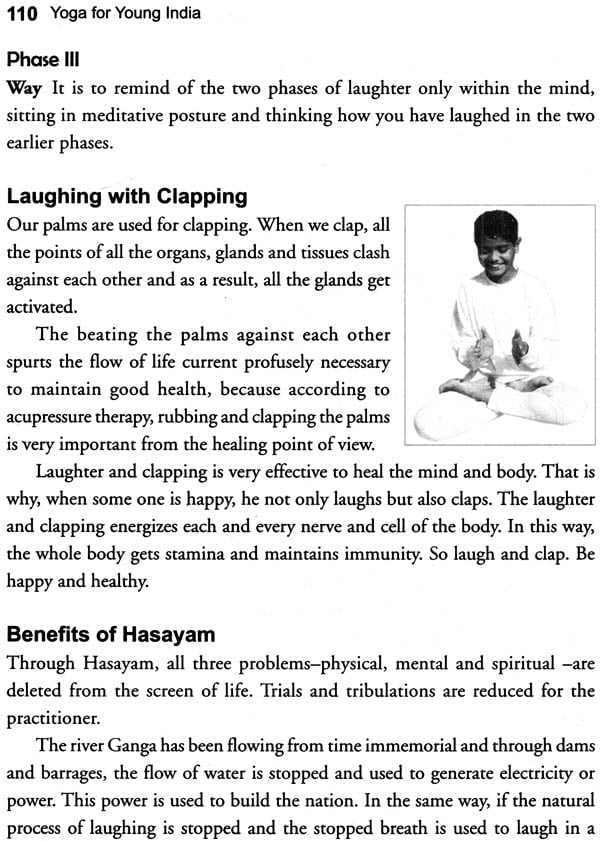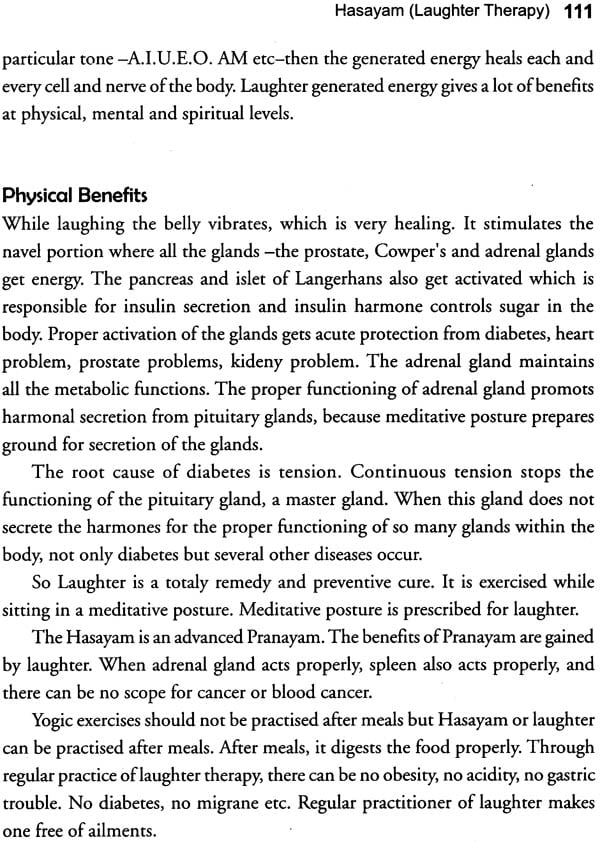
Yoga for Young India (Text Material on Yoga for Beginners)
Book Specification
| Item Code: | NAG556 |
| Author: | Yoga Guru Omo |
| Publisher: | Vitasta Publishing Pvt. Ltd. |
| Language: | English |
| Edition: | 2013 |
| ISBN: | 9789380828978 |
| Pages: | 136 (B/W Illustrations Throughout) |
| Cover: | Paperback |
| Other Details | 9 inch X 7 inch |
| Weight | 200 gm |
Book Description
About the Author
Omanand Saraswati was born on 24 October 1966 in a landlord family at a village named Deegh in Fatehpur district of Uttar Pradesh, India. His parents Shyam Bihari Shukla and Gomati named him Shiv Kishor. Shiv obtained his MA degree in Sanskrit from Allahabad University. He was initiated in the monastic order and named Omanand Saraswati alias Yoga Guru Omo by Dr Swami Paripurnanand Saraswati in Parmarth Niketan Rishikesh. Baba Omo has been a wondering monk for more than 12 years, living in ashrams in the Himalayas, practising yoga and meditation and sharing experiences through books, lectures and workshops for children and adults all over India and abroad.
Preface
Patanjali's Yoga Sutram is a very important treatise. It explains Yoga very simply and in few words, explaining how to realize your own Self and how to live in a society with honour and dignity.
Patanjali was a practitioner of Indian medicine, a Siddha, and a commentator who is believed to have lived about 150 to 200 years before Christ, somewhere in western Tamilnadu of today. He is said to have first evolved a set of dance movements, and then he perfected what we know as yoga postures.
Although yoga was developed and practiced thousands of years ago, it is relevant even now, in the 21st century. It is often said that yoga and meditation heal an individual bodily, mentally, and spiritually. Most people are confused because of so many, so called 'definitions' and interpretations of yoga.
mpts to clear the misconceptions and misunderstandings about yoga and meditation. It tries to help young people understand, first the philosophy behind a healthy body and a healthy mind, and then the practice.
Yoga means realization of the ultimate reality, which is said to be the realization of Self. Once a person understands one's own self, one understands the higher being, which is the spiritual reality. To realize the ultimate reality, there is a process, a way.
Unionization, or becoming one with the divine, is yoga but the way for realization is also called yoga.
Maharshi Patanjali has specified the 'eight limbs of yoga', which are called the Astangyoga (1) Yam (2) Niyam (3) Asan (4) Pranayam (5) Pratyahar (6) Dharna (7) Dhyan and lastly (8) Samadhi. It is necessary to know about all the eight limbs of yoga, in brief.
Patanjali clarifies how to live in society ethically, following the Yam and how to realize God following Niyam. Patanjali has given us this treatise for perpetual peace and harmony. The process starts at an individual level. Which types of persons are essential for society? How can they be moulded? Patanjali emphasises Yamas for social or collective upliftment and Niyamas for the personal or individual upliftrnenr. Yamas and Niyamas are the ultimate ways to keep individuals and society in order. So these are very strong tools for yoga. Yoga is yoga due to these Yamas and Niyamas. Thus, Yoga is a way and also the ultimate realization.
Niyam consists of five practices/terms:
I. Ahimsa (nonviolence)
II. Satya (truthfullness)
III. Asteya (no stealing)
IV. Aparigraha (no hoarding)
V. Brahmacharya (celibacy)
Ahimsa-non violence, means not to hurt anyone mentally, verbally or physically. Satya means to stay on the path of truth. Asteya means not to steal anything from anyone. Aparigraha means not to have things more than your needs. Brahmacharya means to observe celibacy.
Niyam consists of five practices/terms:
I. Sauch (Sanctity)
II. Santosh (Contentment)
III. Tapa (Austerity)
IV. Swadhyay (Study of holy scriptures)
V. Ishwar-pranidhan (Surrender to God)
Sauch means cleanliness, Santosh means contentment, a satisfactory approach, Tapa means austerity, to have the stamina for suffering the contra and critical situations. Swadhyay means study of the scriptures to acquire a rationalized perspective and Ishwarpranidhan means surrender to God.
So, Yamas and Niyamas set the terms and conditions for yoga practitioners. These lay the moral foundation for not only yoga practitioners but also for every person to become a great citizen of the world. They are similar to the Ten Commandments that Moses handed down to his people.
Here I am not going to tell you in detail about the third and fourth limbs of Astangyoga, Asan and Pranayam because a thorough introduction to them has been given in the fourth and fifth chapters of this book. Yes, Pratyahar means to withdraw the senses from the respective subjects.
Dharana, Dhyan and Samadhi are described elaborately in the chapter on meditation. The book is full of knowledge of the hermits of the Himalayas and is ready to introduce briefly this heritage of India's sages to the world.
The purpose of writing this book is to impart this great inherited knowledge to our children in a very logical and scientific manner because today's world is defined in the terminology of science. Without scientific approach and experiments, no one likes to accept even fact as fact. So this book is deliberately formated on the basis of experiments because yoga is one perspective of science. Yoga is getting popular all over the world because of its scientific and therapeutic base. Yoga is a science and it must be taught as a science to all children.
This book is not only for kids aged five to six, but also for young adults because all of us are kids before Rishis and Munies, sages and hermits, monks and Babas, Saints and Mahatmas. Everyone is a child unless God is realized. Every child can be more efficient than he or she is, through practice of yoga and meditation. This book is a result of years of research and it is hoped, it will prove useful not only for children and young adults but also for every beginner, hesistandy approaching the world of yoga.
Yoga practices protects all parts and organs of the body, while gym exercises concentrate on only muscle building. The benefits which are expected from a gym are available through yoga practice also. Yoga cares for the all-round development of the body and the mind.
Contents
| Preface | xiii | |
| 1 | Yoga Tradition and Trends | Jan-17 |
| 2 | Basic Principles of Yoga | 18-39 |
| 3 | Yoga for Eyes | 40-50 |
| 4 | Asana (postures) | 51-70 |
| 5 | Prayanam | 71-88 |
| 6 | Meditation | 89-102 |
| 7 | Hasayam (Laughter Therapy) | 103-113 |
| 8 | Cow and Kids | 114-120 |
